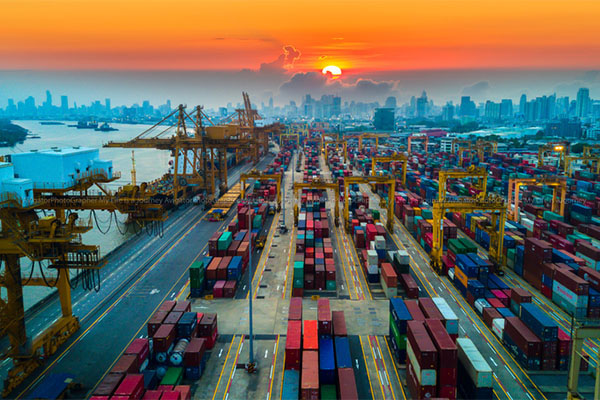POLA and POLB push back consideration of “Container Dwell Fee” until January 28
The Port of Los Angeles (POLA) and the Port of Long Beach (POLB) recently announced they have again postponed the implementation date for their ocean carrier Container Dwell Fee, which will now not be considered until January 28.
This follows previous joint announcements by POLA and POLB, whom collectively account for roughly 40% of United States-bound import volumes, indicating that consideration of the fee would be pushed back each week going back to the week of November 22.
Going back to when the fee was initially rolled out on October 25, POLA and POLB said that the ports have seen a cumulative 62% decline in the amount of aging cargo on their docks, a tally which has trended up going back to the initial announcement of this fee.
And the ports added that their respective executive directors will reassess fee implementation after another week of monitoring data.
On a recent media conference call, POLA Executive Director Gene Seroka explained that while more work needs to be done, there has been a fair amount of progress made in recent weeks.
“The number of import containers on our docks is down significantly since we first announced plans for a Container Dwell Fee,” he said. “The threat of a fee has helped containers lingering nine-plus days on the import side of our business by 56% [for POLA] since this plan was announced back on October 25. And the overall number of import containers on our docks has dropped by 39% during that time. I am pleased with the progress, and as I told the Harbor Commission when it approved the plan, ‘I hope we don’t have to administer any fees.’ That would be because it means cargo is moving off of our terminals, allowing for more ships to get to berth and cargo to be processed.”
POLB Deputy Executive Director and Chief Operating Officer Noel Hacegaba told LM that the fee really represents one of three major actions POLB has taken to address supply chain disruption.
“One of the very first things we did is we activated vacant land inside the port,” he said. “To date, we have repurposed more than 130 acres of vacant land. That is an enormous amount of land we have applied to this challenge, and the idea there is very simple. Warehouse capacity is at an all-time low. The vacancy rate in the Inland Empire, which is about 60-to-70 miles from the ports, is at about 1%. So, in the absence of warehouse capacity, we noticed that containers were piling up in the terminal, and that was what was creating this backlog of ships. By making land available inside the port, it allowed our terminals and our shippers to push those boxes out, and it provided immediate relief to the terminals. The second major action we took was to expand hours of operation at the port. One of our terminals, TTI, has been open 24 hours a day, four days a week, since October. Every other terminal in the Southern California complex is opening earlier and closing later…expanding the hours of operation.”
As for the impetus of the Container Dwell Fee, Hacegaba said that POLB and POLA started seeing that a surplus of containers was spending three times as long inside the terminal once they were loaded off a ship, which, in turn, was creating a lot of issues for the terminals.
“This fee was intended to encourage shippers to remove those inbound containers more quickly,” he noted. “I can tell you that the fee has worked, and that is one reason we have not collected it. We evaluate it on a week-to-week basis, and each week since we have announced the fee, we have been postponing it. When we first announced it, those loaded inbound containers, at POLB, that were sitting on the terminal nine days or longer accounted for about 35% of all containers on the terminal. Today, that figure is closer to 11%. From when we introduced the fee in late October through January 14, that percentage of containers on terminal nine days or more is down by 50%, at POLB. The fee has worked, and that is the reason we have not implemented it. We evaluate it on a week-to-week basis and encourage all of our stakeholders to continue to do their part.”
In late October, the ports announced they would start assessing surcharges to ocean carriers for import containers dwelling on marine terminals, as part of an effort to clear out the significant backlog at the ports.
As previously reported, the ports said that, as per this policy, they will charge ocean carriers for each container falling into two categories:
for containers scheduled to move by truck, ocean carriers will be charged for every container dwelling nine days or more; and
for containers moving by rail, ocean carriers will be charged if the container has dwelled for three days or more
And beginning November 1, POLA and POLB previously said that ocean carriers with cargo in either of these categories would be charged $100 per container, which will increase in $100 increments per container per day. The ports said that the fees collected from this initiative will be reinvested for programs to enhance efficiency, accelerate cargo velocity, and also address congestion impacts throughout San Pedro Bay.
These fees were subsequently approved by the Harbor Commissions of both ports on October 29.
POLA and POLB officials said that prior to the mid-2020 pandemic-driven run-up in imports, containers for local delivery, on average, were on container terminals for less than four days, with containers destined for trains dwelled for less than two days.













